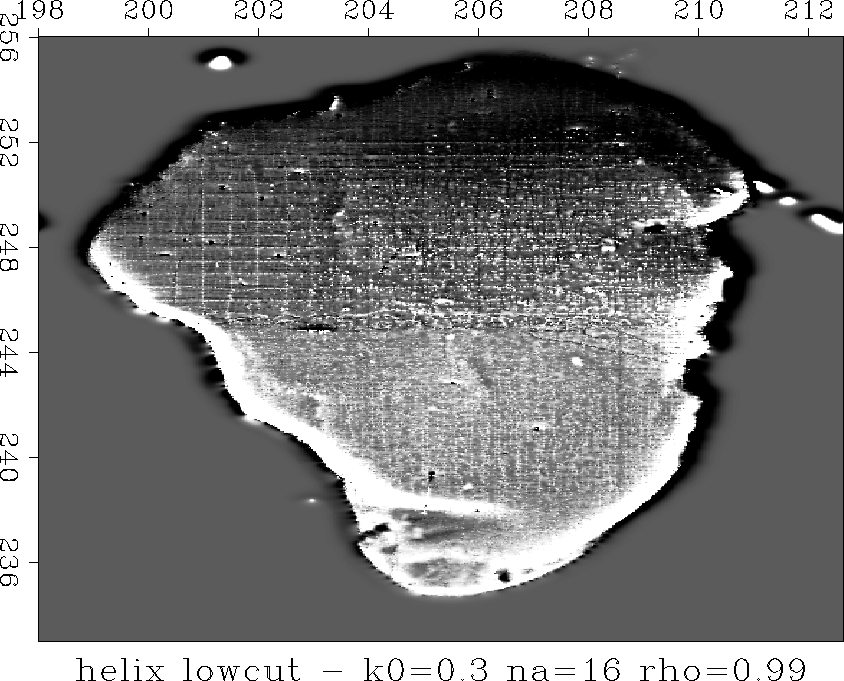Both helix derivative and low-cut filters cut off the zero-frequency component, but the functions of the frequency are different. The derivative filter's response is approximately a linear function of frequency, while the low-cut filter's response has a hole below the cut-off frequency and is flat above it. This leads to the main difference between derivative and low-cut filters: the derivative filter enhances the small-scale structures more, while the low-cut filter makes medium-scale structure much clearer.
In Figure 2, a long line structure in the middle of
the sea is very clear in the plot created by ![]() operator; in
the plot created by helix derivative filter, it is too weak to be seen.
The helix low-cut filter preserves this structure quite well, as shown in
Figure 7.
operator; in
the plot created by helix derivative filter, it is too weak to be seen.
The helix low-cut filter preserves this structure quite well, as shown in
Figure 7.
 |
Figure 7 View of the Sea of Galilee roughened with a helix low-cut filter. k0=0.3, na = 16 and
Another difference is the cost of image processing:
- 1.
- The helix low-cut filter needs to do the deconvolution with
 besides the convolution with
besides the convolution with  ;
; - 2.
- The worse spectral symmetry leads helix low-cut filter to the use of a long filter.